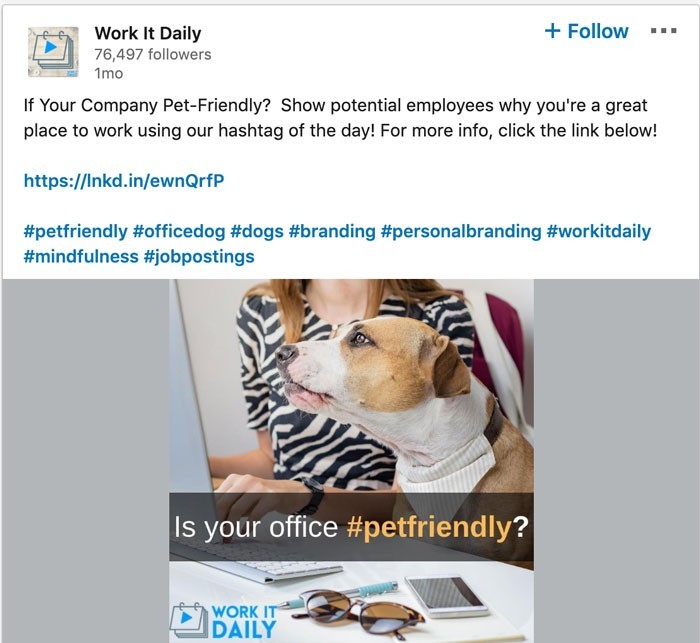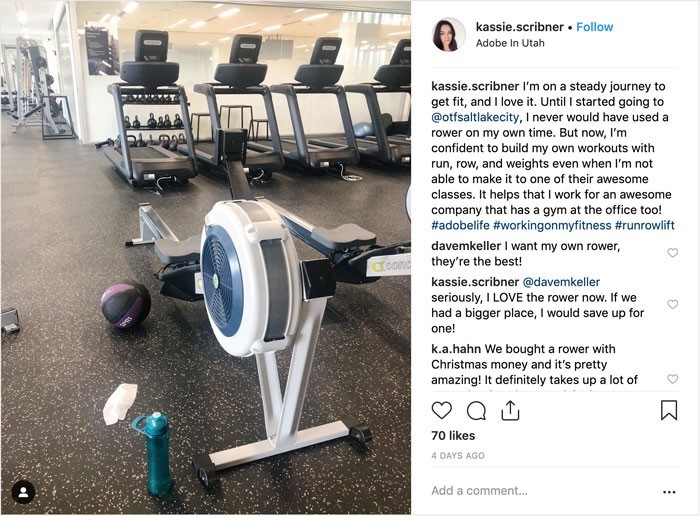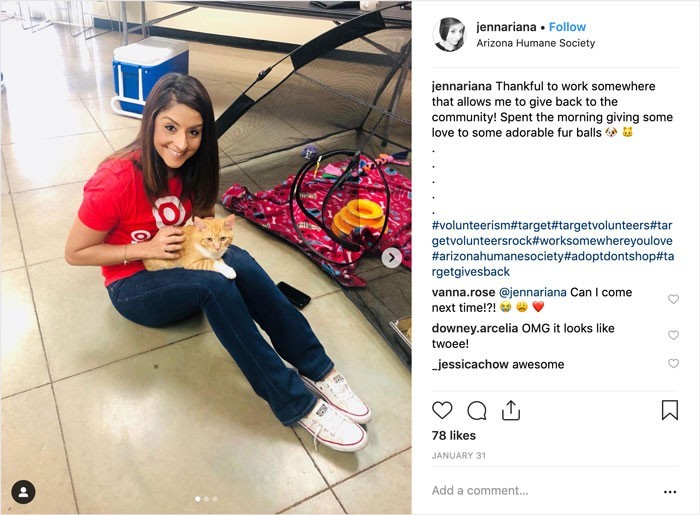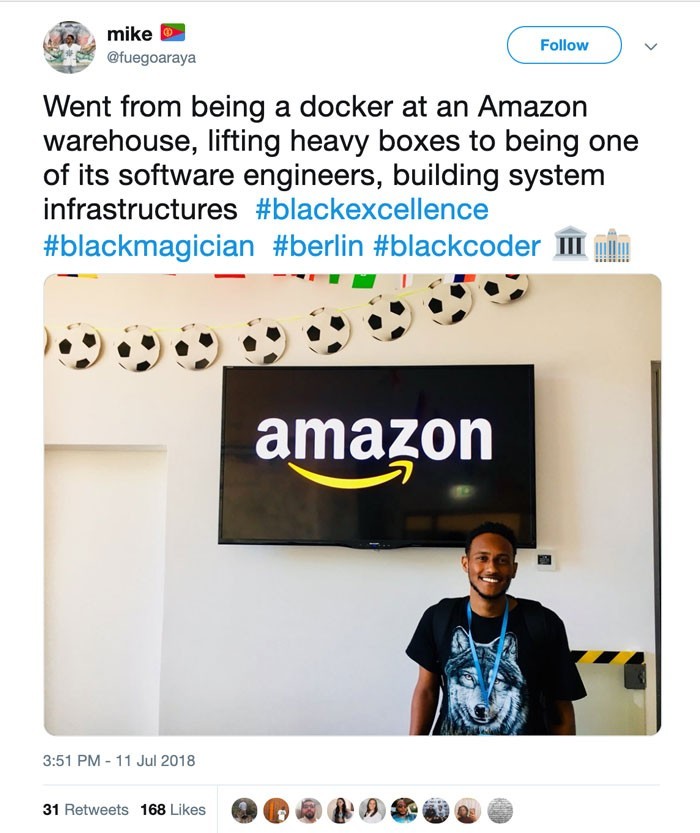#RecruitingHack: 3 Clever Ways to Use Hashtags for Sourcing and Employer Branding
Instagram posts tagged with one or more hashtags have 12.6% more engagement than posts without any. On Twitter, tweets that include hashtags are 33% more likely to get retweeted. And on LinkedIn, impressions on posts with hashtags are 29.59% higher.
Such is the power of the hashtag — and if you’re not using them strategically in your hiring process, you could be missing out.
Younger workers, including those in Generation Z, feel at home on social media and use it for everything from watching content to staying up to date on current events — as well as researching prospective employers. This creates a huge opportunity for recruiters to engage with younger candidates in their natural online habitat, using hashtags to help the candidates find you — and vice versa. And if you’re not doing it, one of your competitors probably is.
Don’t get #FOMO. Here are three smart ways to use hashtags in the hiring process on LinkedIn, Twitter, Instagram, and more.
1. Use hashtags to highlight key attributes of your employer brand that candidates really care about
Not too long ago, candidates would scour job boards to find jobs they were a good fit for. That still happens, but not as much. Today, candidates are just as interested in finding companies that are a good fit for them, rather than the other way around.
Unfortunately, some candidates are coming away from their search unsatisfied. Companies simply aren’t showing them everything they want to see, where they want to see it.
“That is the number one complaint from job seekers,” says J.T. O’Donnell, founder and CEO of Work It Daily, which provides career support to job seekers. “They say they want to research companies on social media but aren’t finding the information they want to see — the kind that gets them excited about applying. They’re not going to knock on your door until they’re really excited about you.”
J.T. argues that many candidates — especially those under 30 — tend to use hashtags when searching for details about jobs on LinkedIn and other social media platforms. For example, if they want to find a job where they can take their dog to work, they might type in #petfriendly alongside the type of role they’re looking for.
“That’s how they think to search,” she says. “They just usually come up short because there isn’t any content being hashtagged. You put in #petfriendly, and there’s a lot of things that have nothing to do with employer brand and a couple of things that do. That’s why there’s a huge opportunity for companies that are smart and get on this early.”
To help companies get started with hashtagging, Work It Daily recently launched a “Hashtag of the Day Calendar.” When companies sign up for the calendar, they’ll get a prompt every day of the work week sharing one popular hashtag searched for by candidates, such as a specific benefit or core value.
If that hashtag relates to something the company offers, they’re encouraged to share some relevant content about it (like a picture of their #petfriendly office in action) and tag it with the hashtag to help candidates discover them more easily.
If you want to dive right in, Work It Daily also offers a free downloadable hashtag cheat sheet. Even with an extensive list in hand, J.T. advises against using more than a few hashtags on each post. Sure, it may help people find you — but it doesn’t look great when they do.
“Don’t do more than three hashtags,” she advises. “If you look at that visually, the person reading it absorbs those three. The moment you get into crazy long strings, you’ve lost them. So I think that simplicity is really important.”
The simplicity rule also applies to the type of content you’re tagging. While it might seem like flashy, professional photographs are best, J.T. points out that candidates want an authentic experience. A quick pic taken on your phone will do the trick, with an interesting caption and some helpful hashtags to make it searchable. The more you post real snapshots of what it’s like to work at the company, the more candidates’ interest will grow — and the more likely they are to apply.
“Recruiters are all overthinking this,” J.T. says. “Stop overthinking it! You just need to get out there, post some stuff, and before you know it, your training wheels will be off. By not posting content around your benefits and culture, you’re implying you don’t have these things.”
2. Create a unique hashtag for your employer brand that makes it easy for candidates to follow you
Once you’re in the habit of posting little snippets of hashtagged content every day, consider taking things up a notch — by creating a custom hashtag for your employer brand.
This strategy makes it easy for candidates to track what your company is up to by following the unique hashtag. That way, they won’t just see content you post on your main company accounts, but also any tagged content shared by your employees.
Companies like Adobe, Microsoft, and LinkedIn use the simple hashtag formula “company name” + “life” as a way for prospective candidates and fans of the brand to follow what they’re up to. This formula works well because it’s easy to remember and captures the ultimate message behind the hashtag — to provide an authentic glimpse into life at the company. That includes big exciting events and the day-to-day routine.
Search #AdobeLife, for example, and you’ll find everything from pictures of employees attending conventions to workout snaps highlighting the offices’ onsite gyms. There’s even a dedicated AdobeLife account that showcases the best parts of the company’s culture.
Adobe even references the hashtag on its career site — a simple way to let candidates know it exists so they can search for it and find more content at their leisure.
Your unique hashtag doesn’t have to be about the company as a whole. If there’s a specific part of your employer brand that really resonates with candidates, you can create a tag solely around that. The more interesting content candidates see around that tag, the more intrigued they’ll be to look up what else your company has to offer.
Take the popular #TargetVolunteers hashtag. Since one of the company’s core values is volunteerism, Target regularly demonstrates its commitment to giving back by sharing photos with the hashtag on social media. To date, almost 3,000 posts feature the hashtag on Instagram alone — many from happy employees and the various charities they support.
Once you’ve settled on your distinct hashtag, be sure to communicate it to employees and encourage them to share their own posts using the tag. If employees are proud of where they work, chances are they’re posting content about their job already, so a unique hashtag can bring all that content together and make it easier for candidates to find.
3. Search for specific hashtags associated with niche groups to source diverse talent
Hashtags aren’t just a useful way to help candidates find your company. They also make it easier for you to find them — if you know where to look.
Aubrey Blanche, Global Head of Diversity and Belonging at Atlassian, says she’s had lots of success using non-traditional sourcing tactics to find underrepresented groups. Her strategy revolves around figuring out which hashtags diverse candidates in the industry frequently use, then identifying others who use the same hashtag.
“I’ve followed hashtags on Twitter that are associated with underrepresented people in tech and I tweet job ads at those participating in them,” she told First Round Review. “It sounds weird, but I’m completely serious. I say ‘Hi, you look like a great UX designer and we have these three open roles that you should take a look at.’”
Aubrey’s unconventional tactics have paid off. Between 2016 and 2018, her efforts helped boost Atlassian’s female technical hires by 80%.
Of course, this strategy only works if you already know the niche hashtags used by the diverse groups you’re aiming to recruit. But a little guesswork and trial and error can go a long way. In tech, for example, diverse coders frequently use hashtags like #blackcoder and #girlswhocode to share their achievements, funny stories, and more.
Candidates may not expect job-related messages on platforms outside of LinkedIn, so it’s important to use this strategy tactfully to avoid putting them off. Be polite and friendly, and try not to spam the same person with multiple messages. That may sound obvious, but it’s easy to do when people use the hashtag a lot or frequently change their profile picture. Catching them off guard can be a good thing if it grabs their attention — as long as it doesn’t come across like you’re stalking them!
Hashtags are a free and easy way to build your employer brand and connect with a new generation of talent
Your company probably already shares employer branding content across LinkedIn, Twitter, and more. Using hashtags strategically on all your posts is a quick and easy way to reach more candidates and build your brand in a meaningful way.
Since social media moves so fast, a post can quickly get lost in a candidate’s feed, even if they follow your company. But if they’re looking for more info about job opportunities or your company specifically, they will go looking for it, so strategically tagging your content can keep your organization top of mind.
To receive blog posts like this one straight in your inbox, subscribe to the blog newsletter.
Related articles







